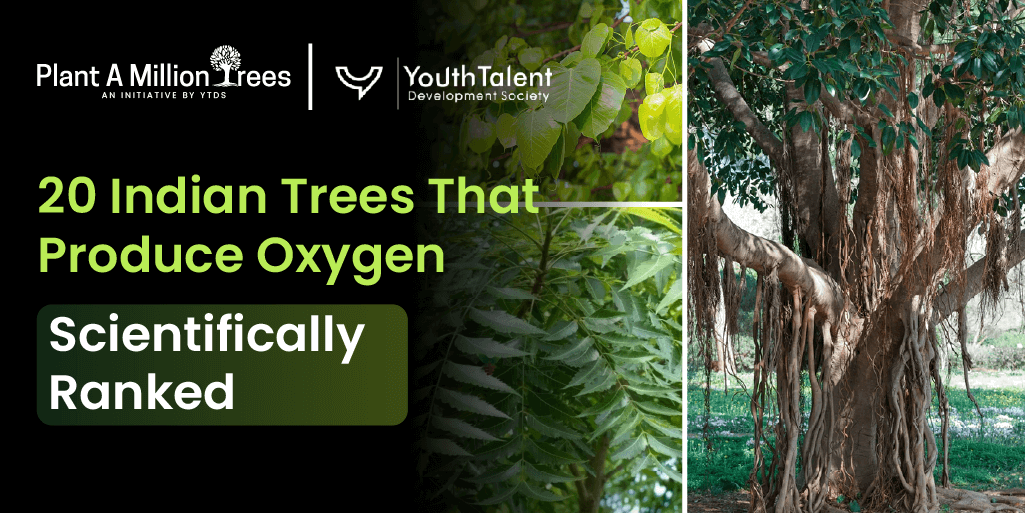Space has also emerged as one of the most prized commodities in modern urban India. Cities are congested with...
Before hospitals came into being, trees came first. In its prime, Indian land had an array of healing trees that loosely formed the basis for the practice of Ayurveda.
These trees were not just mute creatures of nature; they were actively providing lifesaving cures. In modern times, when the world rediscovers the healing power of trees, the legacy of India’s medicinal trees becomes all the more relevant.
Trees for many centuries through thin and thick have been supporting human life- for fever and infections with a balancing effect on mental health.
These trees now become a very important topic for modern times, and the question arises as to how much effort should go into conserving them.
The Historical Role of Trees in Indian Medicine
Ayurveda’s not just some fancy trend popping up on social media, it’s old school, like, seriously ancient. We’re talking 5,000 years of hardcore herbal wisdom, passed down before doctors even knew how to pronounce “antibiotics.” Trees? Total MVPs.
Neem, Peepal, Arjuna, Bael—they’ve been the backbone of Indian healing forever. Neem especially… legends call it “the village pharmacy.”
It’s like your grandma’s medicine cabinet but growing outside, fixing everything from sketchy skin rashes to that breath you really should do something about.
And get this, it’s not some one-size-fits-all deal. People swear these trees sort out your doshas—Vata, Pitta, Kapha—basically, your personal mind and body cocktail, Ayurveda-style.
This system isn’t only about slapping bandaids on your boo-boos, either. Old-school healers thought ahead. They actually planted trees near their homes, hoping for cleaner air, better vibes, and a fighting chance against whatever germs dared float by.
Those ancient texts—Charaka Samhita, Sushruta Samhita—yeah, they were the OG wellness blogs, loaded with thousands of recipes using every bit of those trees: bark, leaves, resin, you name it.
The line between health, nature, and daily life? It’s as thin as it gets. Honestly, it’s wild how much of that still holds up in India today. Nature’s pharmacy: grandpa knew what’s up.
Top 7 Medicinal Trees of India You Should Know

In India, you can find medicinal trees that offer various methods for healing. Today’s top Medicinal Trees are included below:
- 1. Neem (Azadirachta indica) possesses qualities that fight fungi, bacteria and reduce inflammation. The washing of the skin and the teeth, as well as purifying blood, can be done with dried tree leaves, birch oil and walnut oil and bark.
- 2. Banyan (Ficus benghalensis) – Its bark and roots are being used to help relieve diarrhea, ulcers and diabetes. It is also recognized as a sign of longevity.
- 3. Terminalia arjuna (Arjuna) – Arjuna helps protect the heart, enhances its functioning and aids in keeping blood pressure in check.
- 4. Peepal (Ficus religiosa) is thought to offer help for problems such as asthma and anxiety. Even at night, our plants continue to produce oxygen that we need for good health.
- 5. Bael (Aegle marmelos) – Because it has many antioxidants, eating the fruit addresses stomach troubles, while its leaves are beneficial for managing diabetes.
- 6. Ashoka: Many women use Ashoka as a herbal remedy to help deal with menstruation problems.
- 7. Amla: Because it’s rich in vitamin C, amla helps you avoid illnesses, digest your food easier and enjoy healthier skin and hair.
All together, these trees are like India’s herbal Avengers. You’ll find nearly every granny swearing by at least one. Call it ancient wisdom or just ‘mother nature knows best’—I’m not about to argue. Science is catching up, but honestly? India had the receipts centuries ago.
Modern Uses of Medicinal Trees
Today, people still rely on medicinal trees. Most of the products in these industries are made using tree extracts. Neem, Amla and Arjuna extract are some of the most used ingredients in the health care sector.
Syrups containing Peepal and capsules with Ashoka extract are offered for use in alleviating issues related to respiration and periods.
Many in India rely on healing trees for support against immunity challenges, inflammation and recurring health issues. In reality, lots of the medicines used today came from components found in trees.
Alkaloids and enzymes necessary for making painkillers, antibiotics and chemotherapy drugs are obtained from tree bark. All over the world, there is more use of herbal medicine, mostly in products for the skin, as supplements and for immunity, so the medicinal trees of India become necessary for healthcare today and in the past.
Why We Must Protect India’s Medicinal Trees
Even though medicinal trees are vital, they are increasingly being threatened. Some plants used in medicine are being pushed to extinction due to deforestation, expanding cities, one-crop farms and harvesting too many of these species.
The excessive use of Sandalwood trees and Red Sanders and the unreasonable extraction of Neem bark for large-scale manufacturing, should concern us.
With fewer healing trees remaining, we miss out on valuable biodiversity and a great wealth of traditional knowledge and healthcare. Those who rely on these trees for income and medicine in the forest suffer the most.
Conserving the environment is necessary and cannot be ignored. Losing biodiversity also causes culture to diminish. In India, climate and health priorities should include protecting rare trees.
How Individuals and Communities Can Help
Anyone can grow trees that can be used for medicine. These are the best places to plant and grow these plants which are safe for people and animals around us. Having a backyard garden of Neem, Amla and Bael gives kids chances to use natural remedies and understand the importance of caring for nature.
NGOs including Youth Talent Development Society (YTDS) are helping to replenish the number of healthful trees in places where green spaces are shrinking.
Its possible for individuals to take action for tree revival by joining or sponsoring programs. The use of these practices in teaching and CSR by large corporations can grow the movement.
Success Stories: Reviving Medicinal Trees
In many parts of India, inspiring examples prove how much a group’s effort can achieve. Organizations in Kerala are replanting medicinal trees in forests which helps both the environment and those needing medicinal plants.
In Uttarakhand and Sikkim, ‘Herbal Heritage’ plans were introduced to encourage the growth of rare ayurvedic trees in their forests.
Youth Talent Development Society (YTDS) is among those who have introduced medicinal gardens in both schools and communities.
Community-based efforts in conservation have clearly shown that it is possible to bring nature’s pharmacy back to life.
Conclusion
Medicinal trees are significant in India because they connect people and the environment in a peaceful way. Their value has remained even though they originated in ancient times or are used now in the modern world. Still, this history could be lost. Because of our cities and chemical medicines, keeping these trees alive is something we must do for the environment and morals.
If more saplings are planted, we move closer to a balanced environment, healthy culture and harmony with nature. We should do all we can to hand down to our children healing from nature as well as medicines. Now is the time to help save these trees that have shaped Indian medicine—let India’s medicinal trees build a movement.




